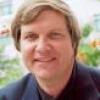Who might be the greatest living peacemaker? I acknowledge the question is a bit impertinent. It conjures competition, while by its nature, the word "peacemaker" bespeaks humility, equality, warm humanity. Even so, for the title of greatest I place my money on Hildegard Goss-Mayr of Vienna. If you don't know of Hildegard, I urge you to get the first biography ever written of her, Marked for Life: The Story of Hildegard Goss-Mayr, written by Richard Deats, published by New City Press.
She was born in Austria in 1930, and grew up in an unusual Catholic family dedicated to peace, even while under the Nazi regime. Early on, she studied the philosophy and practice of nonviolence, and with husband, Jean Goss, became an apostle of nonviolence.
Her fingerprints are on many of the great historical events of the past half century -- from easing Cold War tensions to supporting struggles against colonialism, from lobbying the Second Vatican Council to fostering breakthroughs in interfaith understanding. No one else has shown such breadth. Hildegard is in a league of her own. I met her in 1986, during a retreat she led, and all these years I've kept in touch. Later, during my tenure as director of the Fellowship of Reconciliation, she and I cooperated on various projects.
As I got to know her, I found her to be a medley of contrasts. She is gentle, quiet, thoughtful and peaceable. Yet she dynamically stands behind most of the world's movements for nonviolent change. On the one hand, she stands vulnerable before world leaders. On the other, she expects a full hearing -- and gets it. One thrills to think of the bloodshed she's averted.
Deats, her biographer, writes: "Hildegard is one of the preeminent teachers of nonviolence in our time. A pioneer, teacher and visionary, she has helped forge a new path for humanity…. Her place in history will grow as her seminal role in constructing a peaceful future is discovered."
>
She set her course when she was twelve. The Third Reich in full swing, she stood along a crowded street in Vienna as Adolf Hitler, standing tall, chest out with smug bravado, rolled along in an open car. Tens of thousands pressed close along the route and raucously cheered and waved--everyone but Hildegard. She refused to raise her arm, to join in the thunderous chant: "Heil Hitler." Here was a page right out of the book of Daniel, Nebuchadnezzar garnering worship, and an impertinent knee refusing to bend.
She said, "I felt a huge force pressing on me, which swept everyone away, and I said to myself, 'You have to resist, you can't let yourself be caught up, don't raise your hand even if they lynch you!'" It was an experience that marked her life.
It was later, as the war raged, while hunkering for hours in bomb shelters, expecting a sudden death, that Hildegard committed her life to nonviolence. "Such a situation forces you to make a basic decision: either to submit to the forces of death…and the spirit of revenge -- or to…seek the forces of life that are able to overcome evil at its root…. It was out of this experience that the conviction grew in me that I could not go on living unless I dedicated my life to peacemaking through the power of nonviolence. Later I found in the message of the universal self-giving love of Jesus the inspiration for this path."
Since the 1950s, Hildegard has circumnavigated the globe teaching on the methodology of nonviolence. Her first trip was to Poland, and from there, to nearly every other communist nation, danger and surveillance always close behind.
During the Second Vatican Council (which opened in 1962), she led a peace lobby that included Dorothy Day, Jim Douglass, Gordon Zahn and Eileen Egan. They fasted, met with bishops, drafted documents, and did everything they could to ensure the church did not come out in support of war and nuclear weapons. Their efforts were not altogether in vain. The Council agreed to condemn the bombing of civilians and cities.
In the early 1960s, Hildegard turned to Latin America. She and Jean moved to Brazil, led trainings, and converted Archbishop Dom Helder Camara to the work of peace. Said Camara: "If the Nobel Peace Prize were mine to give, I would give it to Hildegard and Jean Goss-Mayr."
In the 1970s, their work in Argentina inspired artist Adolfo Perez Esquivel to give his life for peace and nonviolence. When he was arrested and tortured by the junta, the Goss-Mayr's campaigned for his release. The following year, Esquivel himself was awarded the Nobel Peace prize.
In the 1980s Hildegard and Jean set their faces toward the Philippines. There they taught nonviolence to thousands of priests, nuns, and activists. It was the groundwork that gave rise to the People Power movement, which ousted the Marcos regime. Nonviolently. In three days.
"Hildegard Goss-Mayr is my candidate for sainthood," wrote the great Trappist, Thomas Merton.
"Everywhere she went," writes Nobel laureate Mairead Corrigan Maguire in the forward to the book, "she joined in solidarity with people, sharing her belief and truth that killing is not in the spirit of true love, that all faiths can join together in spreading this truth, that every human life is sacred and the spirit of God lives in all men and women." Even to those she disagreed with, Mairead writes, "there was a deep respect and reverence for their point of view."
Hildegard is a profound role mode -- one of humility yet of strength, one of weakness yet of successes. "It is sometimes discouraging to see how small the Christian peace movement is," Merton wrote to her in 1962. "But…spiritual work is done with disproportionately small and feeble instruments." It is a paradox woven into the nature of things.
Hildegard lives it. She shows us how to face it and not recoil. She assures us that ordinary people can have a tremendous impact. She shows that any of us can become apostles of peace. We too can make a difference if we stay faithful to the mission. And so I urge you to get the book, Marked for Life: The Story of Hildegard Goss-Mayr. Study it in your parishes; discuss it among your friends. Let it embolden you to make peace.
John Dear has two new books, A Persistent Peace (his autobiography, from Loyola Press), and Put Down Your Sword, (Eerdmans) a collection of essays on nonviolence and peacemakers such as Cesar Chavez, Joan Baez, Dr. King, Sophie Scholl, Thomas Merton, and Franziska and Franz Jagerstatter. Both books are available from www.amazon.com. On April 24-26, he will lead a weekend retreat on the lives and lessons of Gandhi, King, Dorothy Day, and Thomas Merton at the Kirkridge retreat center in Stroudsburg, PA; see: www.kirkridge.org. For info, see: www.johndear.org.




